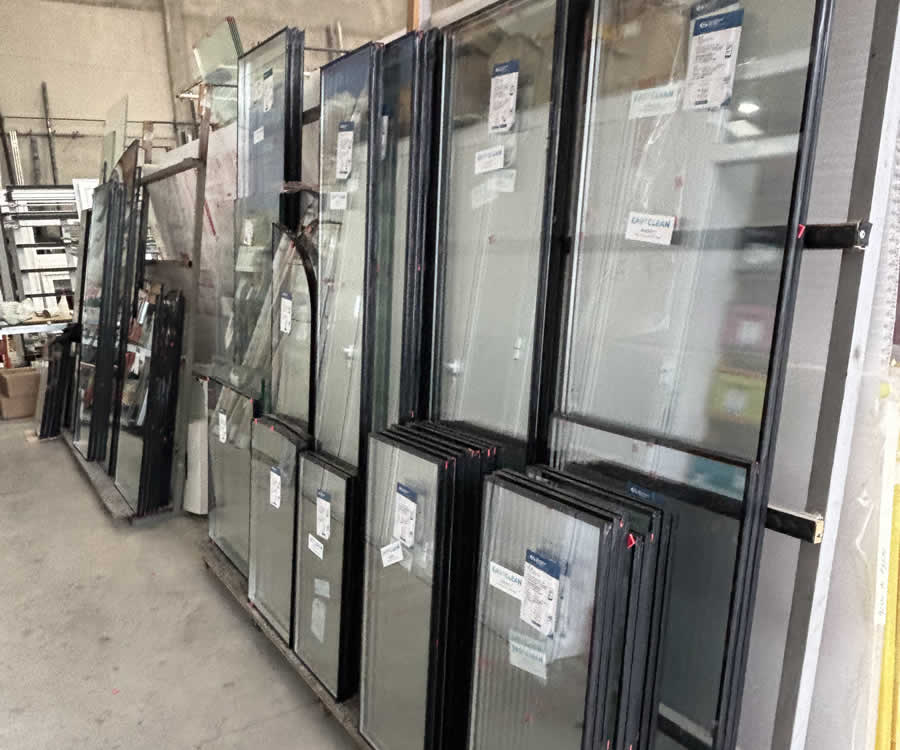TWO TYPES OF GLASS EXPLAINED
Toughened Safety Glass
This is exactly as the name depicts. Should it break, it will break into many small pieces that will reduce the risk of harm.
Laminate Glass
This consists of 2 pieces of glass with an invisible layer of plastic sandwiched between them. Should it break, it holds together and remains intact.
SOLAR CONTROL
It’s really important in Spain to understand what glass is the most suitable and there are 3 different types of solar control glass:
TINTED – reduces glare but can make the view seem dull.
REFLECTIVE – sometimes used for privacy due to its mirror effect, but at night the strongest light source is inside the house so the homeowner won’t be able to see out, although anybody outside will be able to see in.
SUN GUARD – a sophisticated glass that reduces solar intake but avoids the tinting . On reflection of the other two types, it also has the added ability of reflecting interior radiant heat back into the room that would be lost through ordinary double glazing (very much a revere process to reflecting sunshine out) this gives this glass a very high effective insulation value.
LOW E GLASS
Low E or Pilkington glass – this product reflects heat back into the room in the same way as sun guard but without the solar control, so in winter “free” solar heat can enter the home.
ENERGY EFFICIENT GLASS
What is Energy Efficient Glass?
Glass is one of the most popular and versatile building materials used today. One reason is because of its constantly improving solar and thermal performance. And one way this performance is achieved is through the use of passive and solar control low-e coatings. So, what is low-e glass? In this section, we provide you with an in-depth overview of coatings.
In order to understand coatings, it’s important to understand the solar energy spectrum or energy from the sun. Ultraviolet (UV) light, visible light and infrared (IR) light all occupy different parts of the solar spectrum – the differences between the three are determined by their wavelengths.
Energy Efficient Glass is fitted as standard at Crystal Windows
Please read below for more of an explanation.
The Solar Energy Spectrum
Ultraviolet light, which is what causes interior materials such as fabrics and wall coverings to fade, has wavelengths of 310-380 nanometers when reporting glass performance.
Visible light occupies the part of the spectrum between wavelengths from about 380-780 nanometers.
Infrared light or heat energy, is transmitted as heat into a building, and begins at wavelengths of 780 nanometers. Solar infrared is commonly referred to as short-wave infrared energy, while heat radiating off of warm objects has higher wavelengths than the sun and referred to as long-wave infrared.
Low-e coatings
Low-e coatings have been developed to minimize the amount of ultraviolet and infrared light that can pass through glass without compromising the amount of visible light that is transmitted.
When heat or light energy is absorbed by glass it is either shifted away by moving air or reradiated by the glass surface. The ability of a material to radiate energy is known as emissivity. In general, highly reflective materials have a low emissivity and dull darker colored materials have a high emissivity. All materials, including windows, radiate heat in the form of long-wave, infrared energy depending on the emissivity and temperature of their surfaces.
Whether a low-e coating is considered passive or solar control, they offer improvements in performance numbers.
The following are used to measure the effectiveness of glass with low-e coatings:
U-Value is the rating given to a window based on how much heat loss it allows.
Visible Light Transmittance is a measure of how much light passes through a window.
Solar Heat Gain Coefficient is the fraction of incident solar radiation admitted through a window, both directly transmitted and that is absorbed and re-radiated inward. The lower a window’s solar heat gain coefficient, the less solar heat it transmits.
Light to Solar Gain is the ratio between the window’s Solar Heat Gain Coefficient (SHGC) and its visible light transmittance (VLT) rating.
Here’s how the coatings measure up by minimizing the amount of ultra-violet and infrared light that can pass through glass without compromising the amount of visible light that is transmitted.
As a general rule, pyrolytic coatings work well in heating dominated climates, while MSVD is a good fit for cooling dominated climates.
When thinking of windows, size, tint and other aesthetic qualities come to mind, but low-e coatings play an important role in the overall performance of a window and can significantly affect the overall heating, lighting, and cooling costs of a building.

